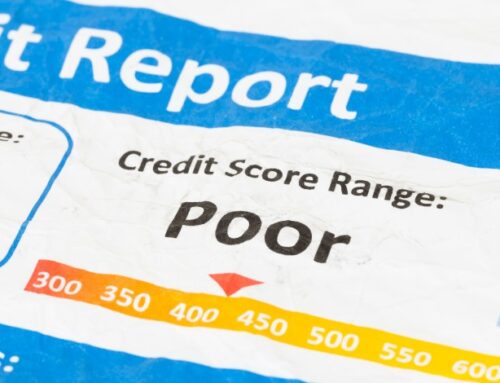Student loans are a burden that millions of Americans deal with years and decades after receiving their degree. A study conducted by One Wisconsin Institute found the average length for repaying student loan debt is 21 years. Student loan consolidation and refinancing are great options to cut down the overall repayment amount and timetable, but this strategy may not suit your current financial situation. Below, we’ll examine the difference between consolidation and refinancing, how to determine if this method is right for you and what you can expect when consolidating or refinancing.
Student Loan Consolidation Vs. Refinancing
The overarching strategy of student loan consolidation and refinancing are similar, and often these terms are used interchangeably. However, they are two different repayment options with specific benefits and drawbacks.
Student loan consolidation allows you to combine multiple federal education loans into one easy and convenient loan, known as the Direct Consolidation Loan. As a result, you receive a single monthly payment rather than various payments into different loans. On the other hand, refinancing allows individuals to merge various private and federal loans into one private loan.
How Do They Differ?
While these repayment options may seem nearly identical on the surface, you can do specific things when consolidating that you cannot do when refinancing and vice versa. Here is a more in-depth look into how these methods differ from each other.
| Student Loan Consolidation | Student Loan Refinancing | |
|---|---|---|
| What are the eligible loans? | Federal education loans | Private and federal loans |
| Can I save money and lower my rates? | No. This method will generally extend the repayment timeline, which will lower your monthly payment, but you may end up paying more in interest. | Yes. Refinancing will provide you with new terms that typically come with a lower interest rate. |
| Will I pay just one monthly bill? | Yes | Yes |
| Who are the lenders? | The U.S. Department of Education | Banks, credit unions and personal finance companies |
| Do federal benefits still apply? | Yes, when receiving a direct consolidation loan, you’ll retain federal benefits such as federal loan protections, repayment options and forgiveness programs. | No, if you refinance federal loans through a private entity, you’ll lose those benefits. |
| What are the repayment options? | Consolidating federal loans outside of Direct loans, you may receive access to payment plans such as income-driven repayments or Public Service Loan Forgiveness (PSLF) | When refinancing, there are various repayment options available. |
How To Determine If You Should Consolidate Your Student Loans
Consolidating your student loans can be a useful strategy to help manage your debts better. However, this method may not be suitable for your current situation. Let’s take a look at some circumstances where consolidating is the best course of action.
- Monthly payments are too much to handle: If loan payments are eating up a lot of your monthly budget, consolidating may be a good option for you. Once you leave college, your federal student loans are automatically set up for a 10-year repayment period. While you can adjust the payment plan, your options are limited. The Direct Consolidation Loan will extend the repayment period to 30 years, greatly reducing the amount paid per month.
- Switching from a variable-rate to a fixed interest rate: Several loans with varying interest rates can be unconducive to repaying debt. Consolidating will take the weighted average of your loans to give you one fixed interest rate.
- You don’t qualify for federal benefits: Loans such as the Perkins Loan and Federal Family Education Loan (FFEL) Program do not provide you with benefits such as Public Service Loan Forgiveness. If you have these types of loans, consolidation may be beneficial. Once you are set up with the Direct Consolidation Loan, you’ll be eligible for loan forgiveness and an income-driven repayment (IDR) plan.
What Are the Benefits of Consolidating Student Loans?
Student loan consolidation has various advantages. Here are some of the perks to implementing this strategy.
- The ability to combine loans into a single, convenient loan
- Lower monthly payments
- The access to keep federal benefits such as federal loan protections, repayment options and forgiveness programs
- The potential to qualify for additional benefits such as an IDR plan or a PSLF
- Switch from a variable-rate to fixed interest rate
- You can choose your federal loan servicer
What Are the Drawbacks of Consolidating Student Loans?
While consolidating your student loans has a considerable amount of benefits, there are some drawbacks that you should be aware of before reaching a final decision to consolidate or not. Here are some of the disadvantages of using this method.
- You won’t end up saving money. Even though your monthly payment will decrease, you’ll most likely spend more money in the long-term through interest.
- Since the new interest rate is based on the weighted average of your loans, the likelihood of decreasing your overall interest rate is low.
- You can only consolidate your federal loans. Any private loans will not be considered.
How To Consolidate Student Loans
If you’ve decided that consolidating your student loans is beneficial for your current financial situation, here are a few things you should know about the process.
Eligibility Requirements
While the Direct Consolidation Loan doesn’t have strict requirements for qualifying, according to the U.S. Department of Education, there are still a few prerequisites. Some of those requirements include:
- You can only consolidate if you are in the repayment or grace period.
- Typically, you can’t consolidate a loan that has already been consolidated unless another eligible loan is added to the consolidation.
- If your loans are in default, you’ll need to make three consecutive monthly payments on the loan before you can move forward with the consolidation process. Alternatively, you may be eligible if you agree to one of the following repayment options—Income-Based Repayment, Pay As You Earn, Revised Pay As You Earn or Income-Contingent Repayment Plan.
What Type Of Federal Loans Can Be Consolidated?
According to the Department of Education, only 20 types of loans are eligible for consolidation. Some of the most popular loans that are acceptable during the process include:
- Subsidized Federal Stafford Loans
- Unsubsidized and Nonsubsidized Federal Stafford Loans
- Direct Subsidized Loans
- Direct Unsubsidized Loans
- Direct PLUS Loans
- Federal Perkins Loans
- Parent Loans for Undergraduate Students
- National Direct Student Loans
How To Apply For A Direct Consolidation Loan
The Department of Education made applying for a Direct Consolidation Loan easy and accessible. Individuals wanting to apply can submit online via their application portal, or you can download the form and submit it by U.S. mail.
Once the application has been submitted, it may take a few weeks to several months to receive an approval notice. Since the approval process can take some time, it’s important that you continue to make payments on your current loans.
Learn More About Debt Payoff Strategies
Managing debt can seem like a daunting task at times, but it doesn’t have to be stressful. Discover how to pay off your debt efficiently by implementing some of the best debt payoff strategies.
If you’re still overwhelmed by your debts, the professionals at Arizona Central Credit Union are here to help. Contact us today to find out how you can be on your way to living a debt-free life.




